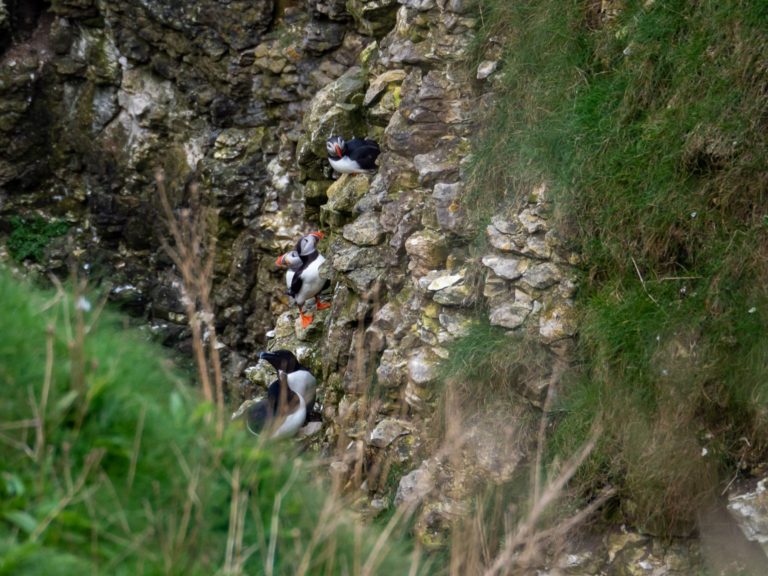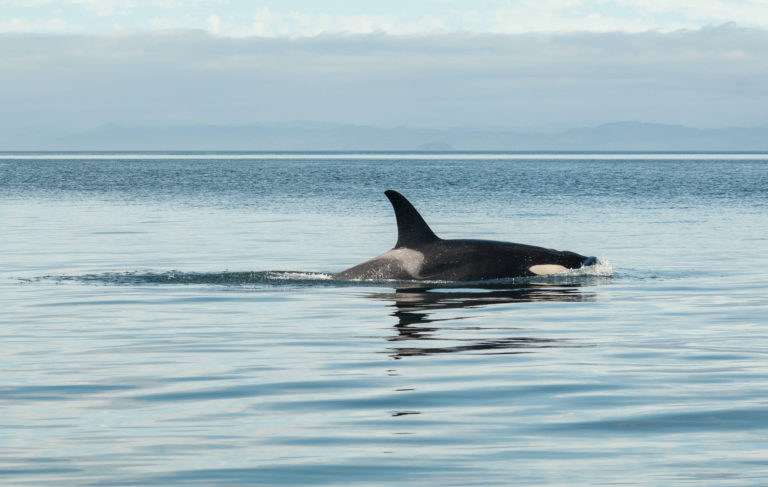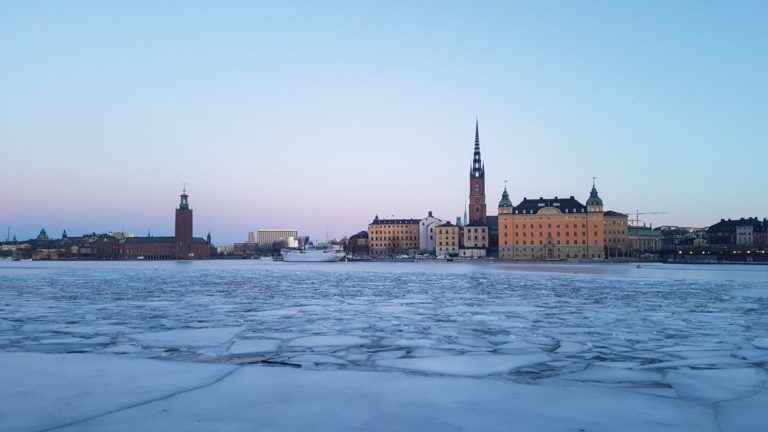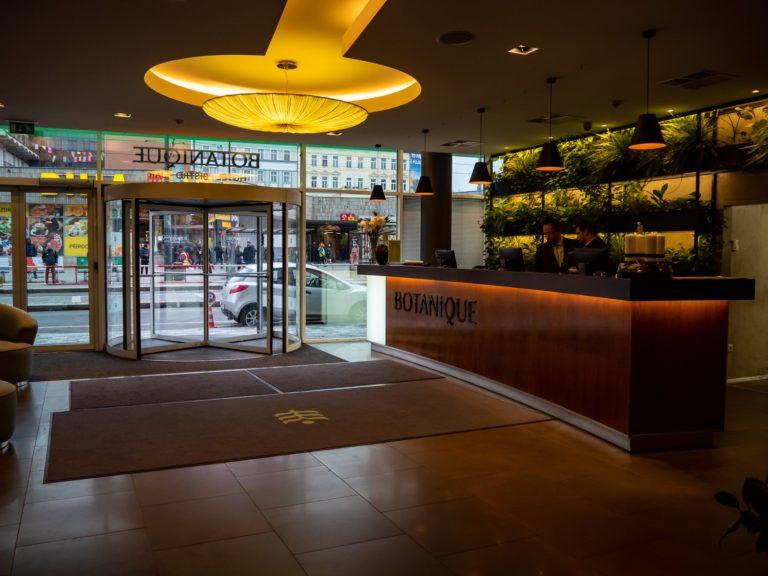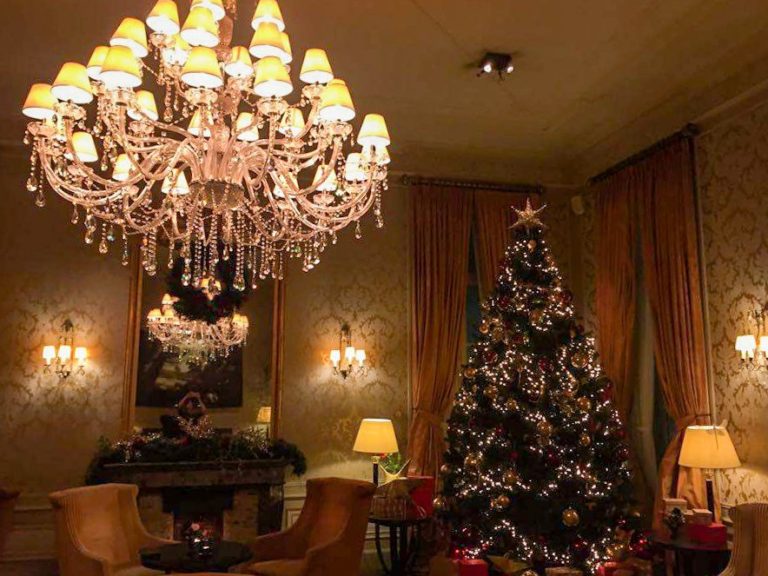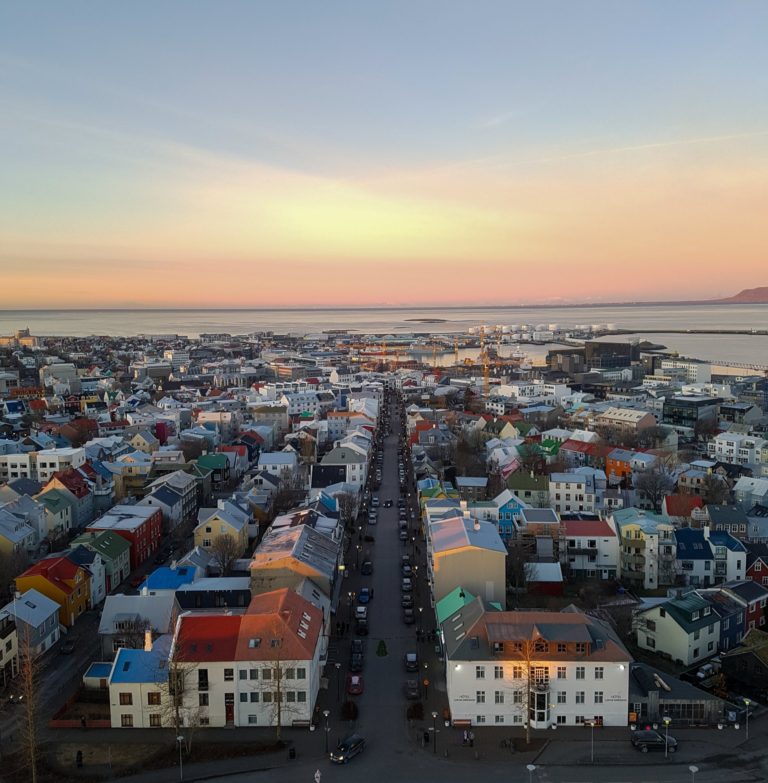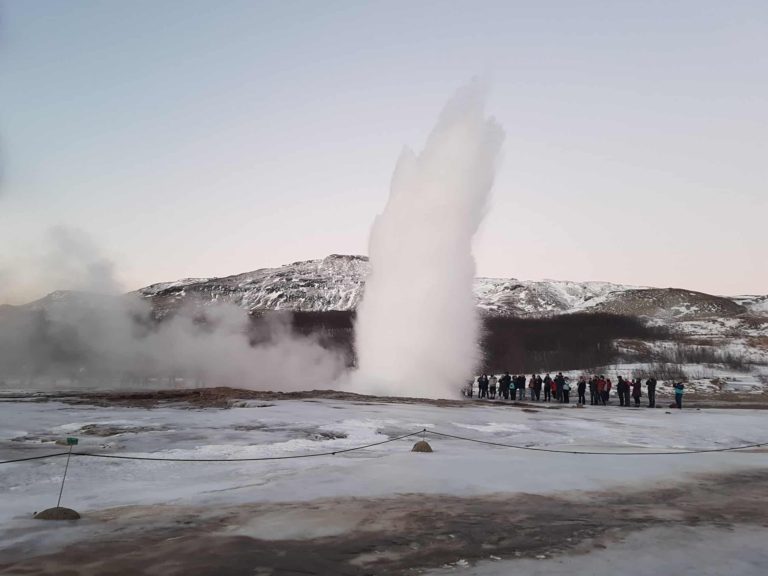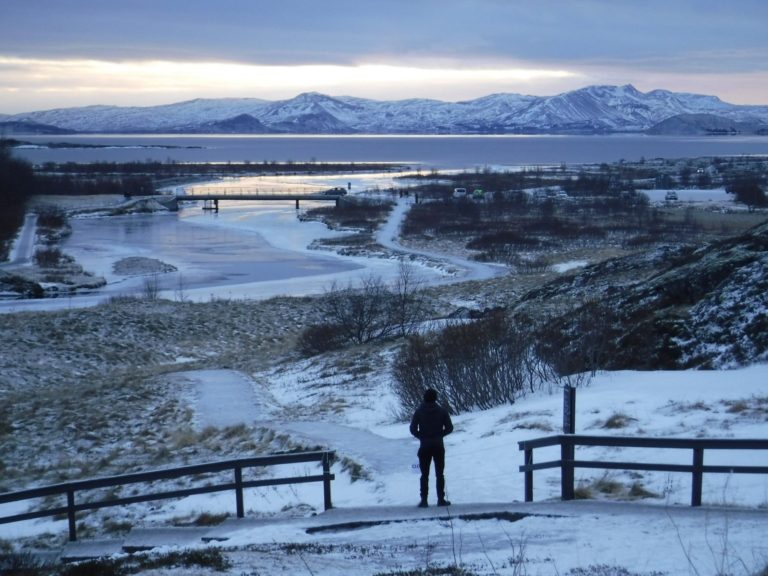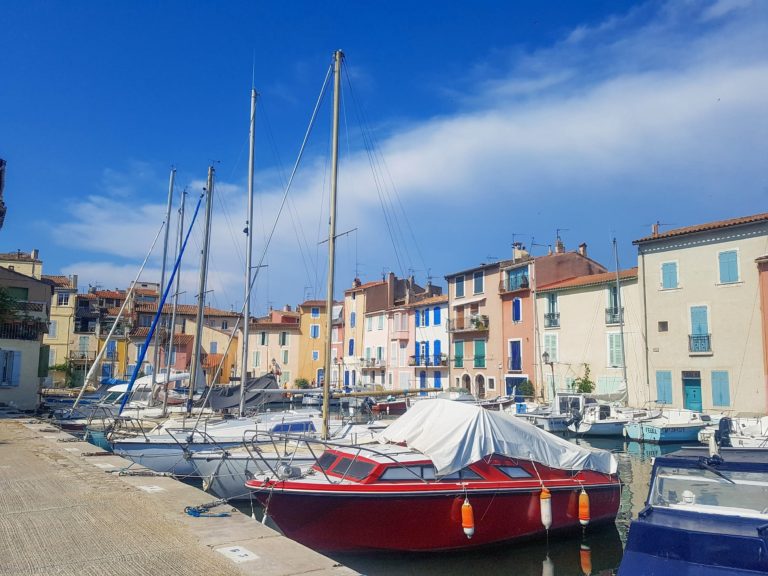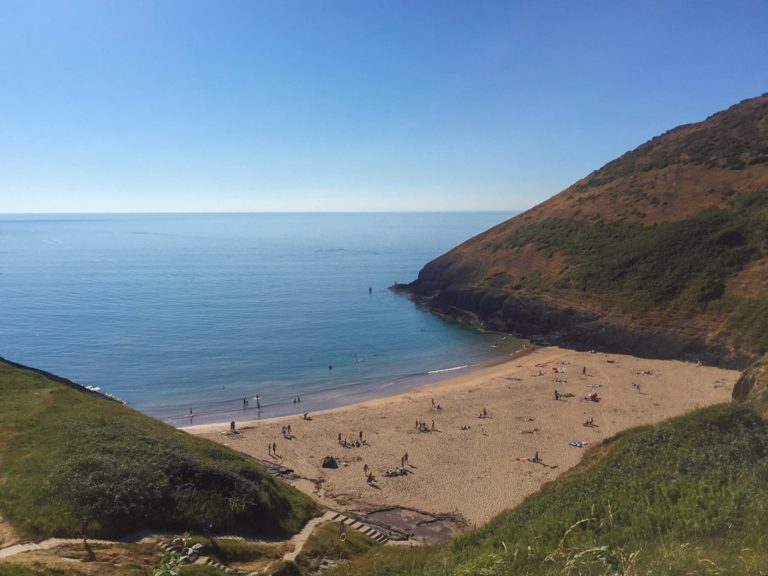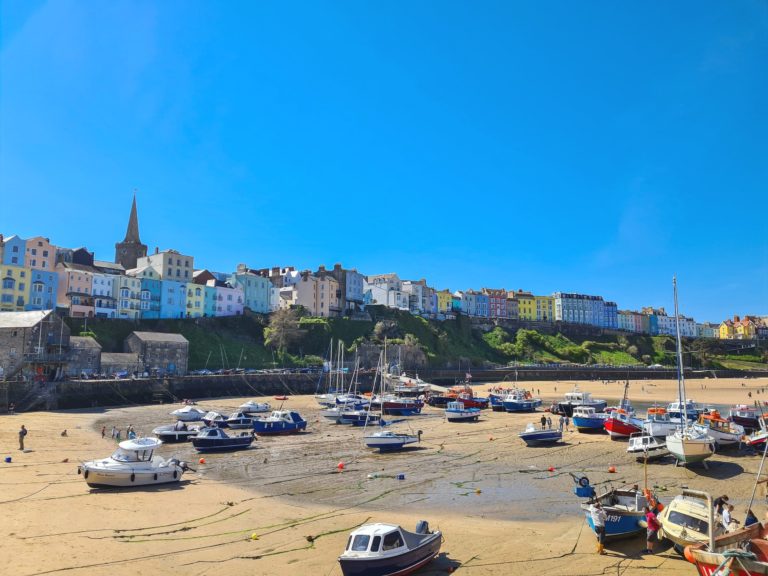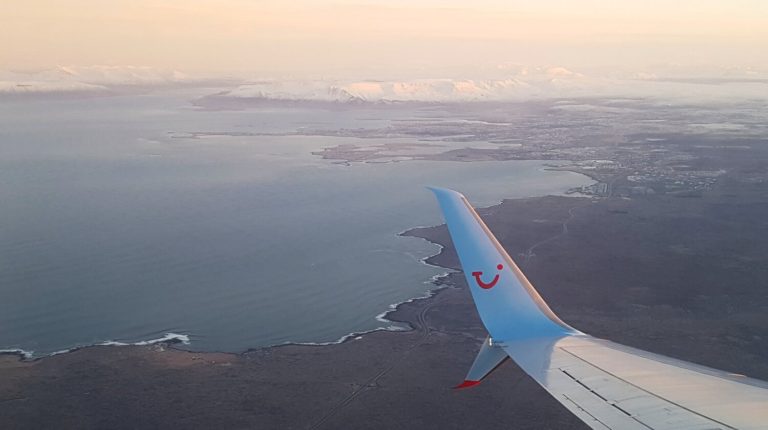The 14 best stops on Iceland’s Golden Circle
The 14 best stops on Iceland’s Golden Circle Route, plus an interactive map, places to eat, where to stay, things to know before you go and more!

This post may contain affiliate links, which means we might earn a small commission on anything purchased through these links at no extra cost to you. Learn more on our disclaimer page.
Iceland’s Golden Circle is a must-see route between 3 of Iceland’s most visited natural attractions. Conveniently located within striking distance of Reykjavík, Iceland’s capital, The Golden Circle is a shorter alternative than driving Iceland’s Ring Road (which circles the entire country and takes about 1 week) as the loop only takes one day to drive. The 3 main stops on Iceland’s Golden Circle are: Þingvellir National Park, Geysir geothermal area, and Gullfoss waterfall, but many tours take in extra attractions along the way. These can range from a geothermal greenhouse or a natural hot-water spa to larger Icelandic attractions, such as the Blue Lagoon or spotting the Northern Lights. Discover everything you need to know about Iceland’s Golden Circle, including the best stops, route, tips and more!
Time needed: 1-2 days.
When to go: Late November-December for snowscapes / June-July for warmer weather and lush green scenery.
Weather: Averages of -10°C-5°C in the Winter and 8°C-20°C in the Summer.
Language: Icelandic.
Currency: Icelandic króna.
How long do you need to do the Golden Circle?
The Golden Circle can easily be done in one day. In fact, the whole circuit only takes about 3 hours of driving, but you’ll probably take longer to enjoy the sights along the way. The journey covers around 140 miles (230 kilometres), with plenty of detour options. It’s also possible stay over on the route and split the journey up, enjoying the route in two-three days.
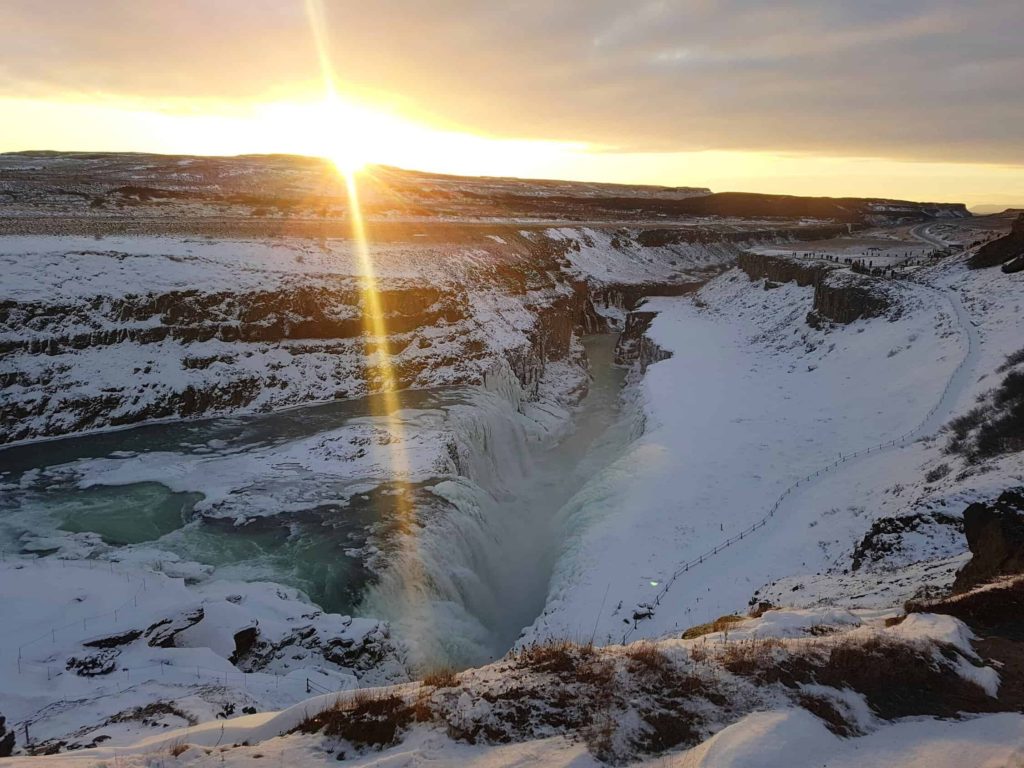
Can you drive the Golden Circle yourself?
Yes. There are a variety of ways to experience the Golden Circle and by far the most popular is to hire a car.
Alternatively, you can book onto a guided tour. These usually depart from Reykjavík and operate as bus tours, but smaller and private tours are available too. If you want a really unique experience you can book a helicopter tour, which takes you around the main attractions, plus has the option to land on top of a glacier!
On our trip, we took a tour with TUI. While we usually like to hire a car and enjoy the freedom to explore ourselves, we were actually really grateful we’d taken the tour. The guide was so knowledgeable and informative and we learned a lot more about where we were and what we were seeing than if we had done it ourselves. If you’re going to drive the route yourself, we’d recommend you save this article to refer to later so you can learn about where you are as you go.
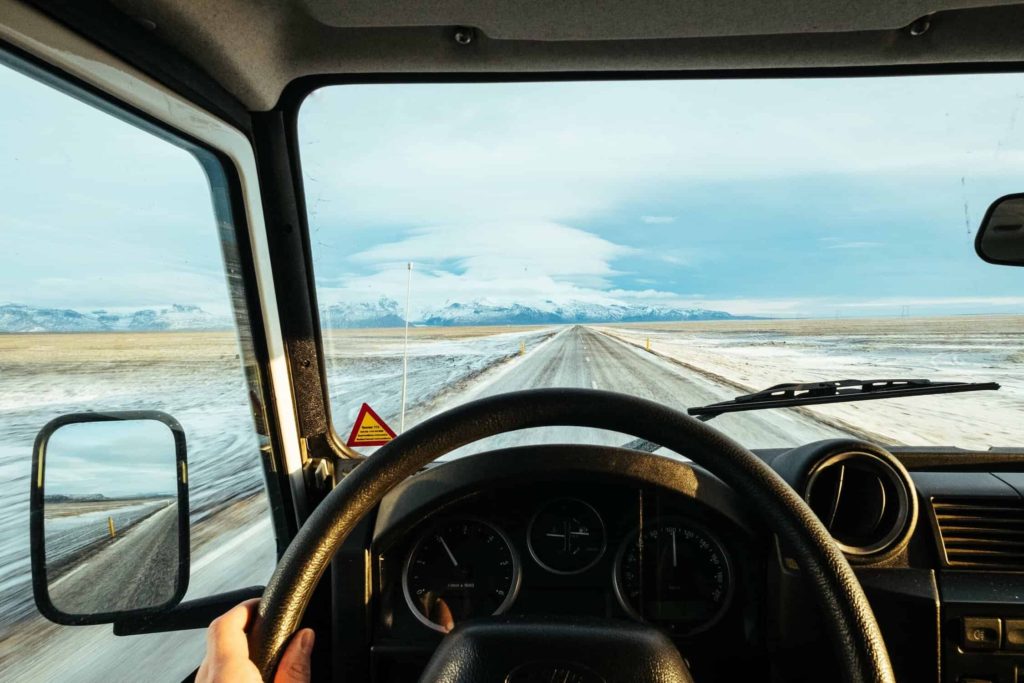
The Best Golden Circle Tours
There are numerous reasons you might not wish to drive the Golden Circle – hiring a car can be expensive, you might not have a driving license that is valid in Iceland or maybe you’re worried about driving the roads in Winter. Don’t worry, we’ve compiled a list of the best Golden Circle tours we could find.
The classic: Full Day Golden Circle Tour
For adventure seekers: Golden Circle with Snowmobiling on a Glacier
Iceland bucket list: Golden Circle and Northern Lights Tour
Explore then relax: Golden Circle with Iceland’s Blue Lagoon
Travel in style: Golden Circle by Helicopter Ride
See more of Iceland: 3-Day Golden Circle, South Coast, & Glacier Tour
Alternatively, you could book a package holiday and save yourself the effort of planning everything yourself. We highly recommend TUI to UK travellers. They not only offer a range of flights to Iceland but also include a variety of hotels and excursions too. When we visited Iceland in 2017, we discovered that a TUI package of flights, hotel, airport transfers and two excursions was cheaper than booking it all ourselves! It also had the added benefit that all of TUI’s holidays are ATOL-protected, they have friendly representatives to assist you and a useful app with a wealth of resources to answer any questions you might have. You can read more about our experience with TUI here.
Book your next trip to Iceland with TUI here, from as little as £437 per person!
Those travelling from outside Europe might wish to consider booking an Iceland Vacation Package with Icelandair.
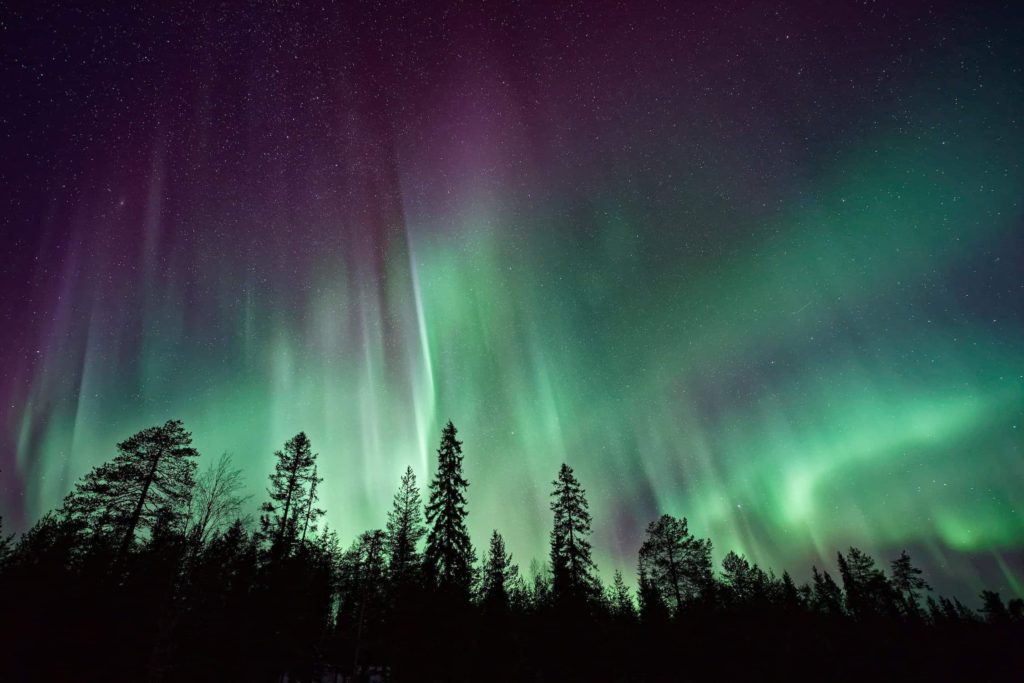
All the stops on The Golden Circle Route
Stop 1) Reykjavík
Almost every visitor to Iceland starts and ends their Golden Circle trip from the capital. Only 45 minutes from Keflavík International Airport, the capital city of Iceland is one of Europe’s trendiest cities. Believed to be the location of the first permanent settlement in the country, the city, known locally as Smokey Bay, is home to under just 150,000 inhabitants. Surrounded by snow-capped mountains and boasting a wealth of cultural and historical attractions, as well as a vibrant art and music scene, Reykjavík has so much to offer. Discover all the best things to do in Iceland’s capital in our Thorough Guide to Reykjavík.
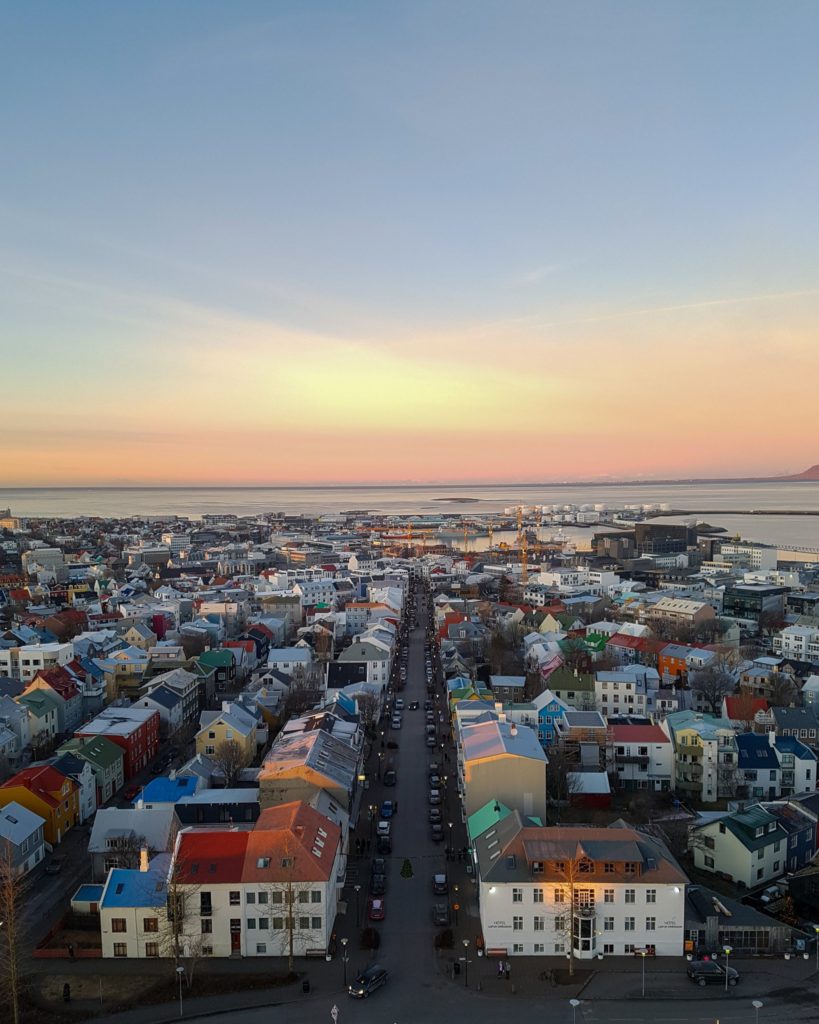
Stop 2) Þingvellir National Park
Most tourists opt to drive the Golden Circle clockwise, in which case you’ll arrive at Þingvellir (Thingvellir) National Park first. Only 45 minutes drive from Reykjavík, this UNESCO World Heritage Site is home to lava fields, icy lakes and multiple volcanoes which surround the park. Thingvellir National Park is famous for being the site of the first European parliament, which was established by the first settlers in Iceland in 930 AD. Known as Alþingi (Iceland’s parliament), the assembly was created to help ease disputes and create a fairer society and it was moved to Reykjavík in 1844.
Thingvellir National Park is also the only place in the world where you can see the North American and Eurasian tectonic plates above ground. You can hike through the rift between the plates, or even SCUBA dive between the European and North American tectonic plates. The site is known as Silfra Fissure and it offers adventure-seekers a once-in-a-lifetime opportunity. With clear waters giving you 100 metre (328 ft) visibility (said to have the best underwater visibility in the world) and a water temperature of a pretty chilly 2°C (35°F), this is an activity you’ll want to add to your Iceland bucket list. Don’t worry if you’re not PADI certified – you can also join a Snorkel Tour of Silfra Fissure with free underwater photos!
One of the best things to do in Thingvellir National Park is hike its many trails. Highlights to stop at include Þingvallavatn, Iceland’s largest natural lake, and the small but mighty Öxarárfoss Waterfall, which sends 13 metre (44 ft) tall cascade over the cliffs of the Almannagja Gorge. This gorge also happens to be a popular spot with hikers and is a filming location for several scenes in Game of Thrones. There are also numerous viewpoints, with the panoramic Hrafnagjá Observation Deck not to be missed.
Learn more about driving to Þingvellir National Park in our Golden Circle Self-drive Road Trip Itinerary
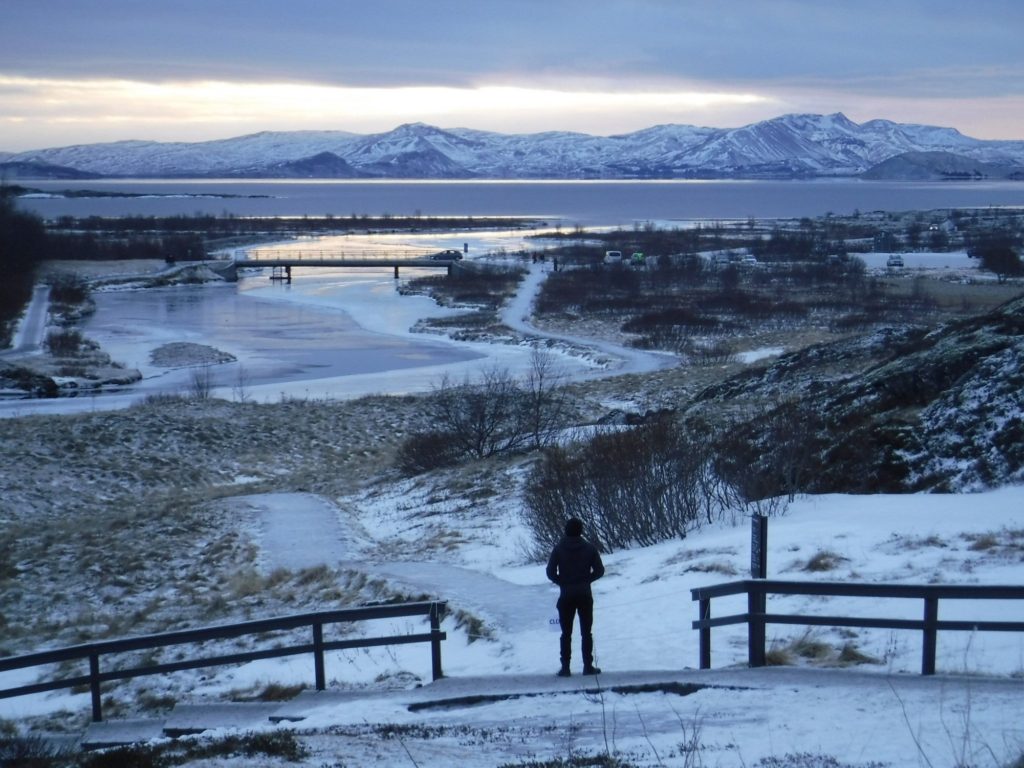
Stop 3) Laugarvatn
As you drive East along Road 36, you’ll pass the small village of Laugarvatn, a small town and a great spot for a little break. You can visit the Gallery Laugarvatn, which features a wide display of Icelandic handicraft items or schedule some time in the Laugarvatn Fontana Geothermal Baths. Featuring a natural pool, steam rooms and fresh-water lake, Laugarvatn Fontana spa uses the natural waters from the area’s local hot springs. You can also try geothermal rye bread (rúgbrauð) here. Attend a dough preparation demonstration, learn about the history of geothermal bread, which is left up to 24 hours in the earth to bake, and try some too.

Stop 4) Geysir Hot Spring Area
The Geysir Hot Spring Area is a geothermal area set within the Haukadalur Valley. This area is famous for its geysers, which are known to shoot vast jets of hot water high into the air. Here you’ll also find boiling mud pits, steaming vents and smokey chimneys. Geysir (or The Great Geysir) is the main attraction but mostly dormant, only stirring after earthquake activity. It is the earliest documented geyser in European literature and has been active for around 10,000 years. Geysir hasn’t erupted since 2016 and before that 2000. Strokkur is the most active geyser and typically erupts every 6–10 minutes. It usually shoots water between 15–20 metres (49–66 ft), but it can sometimes erupt up to 40 metres (130 ft) high. The collision of boiling hot water and the cold air in winter often creates a dramatic cloud of thick steam. If you’re lucky you might even witness a double eruption.
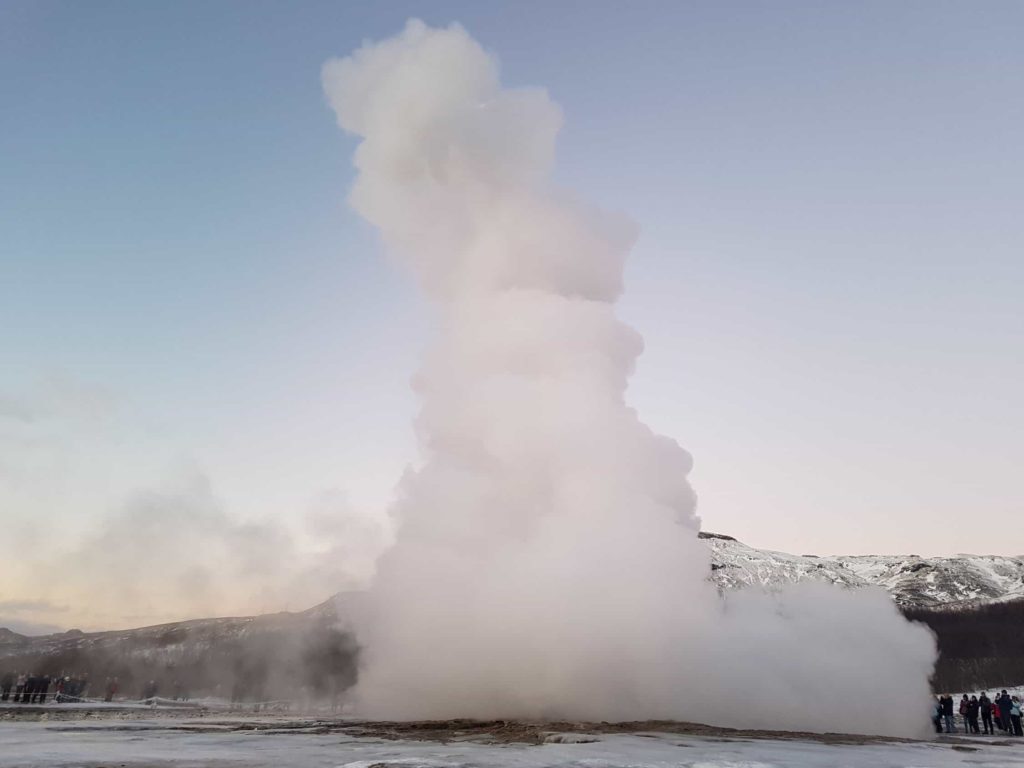
Other natural attractions to look for in the Geothermal Hot Spring Area include:
- Blesi – Meaning blaze, Blesi is a smaller geyser that used to spout up to one metre, but is also currently dormant. The azure blue colour found in its pit is caused by dissolved silica.
- Konungshver (or The Royal Spring) – The northernmost spring in the Geysir Hot Spring Area. Konungshver was named in 1874 when King Christian IX visited Geysir. Konungshver has never spouted, as its shaft is full of boulders that are clearly visible to anyone who looks into the spring, yet it still growls a little from time to time.
- Litli-Geysir – a hibernating geysir.
The Geothermal Hot Spring Area is a very popular spot on the Golden Circle Route and can get quite busy. We’d recommend trying to time your visit with the beginning or end of the day to avoid the crowds. In Winter, anytime around 09:00 or 16:00 should be quieter, while in Summer it’s best to try to visit before 10:00 and after 18:00. There is no entrance fee to enter the Hot Spring area. Parking is also free and is located across the road, alongside a restaurant and gift shop. It’s very important to stay on the marked areas and paths and to stand back behind the line when a geyser erupts, as the water is extremely hot.
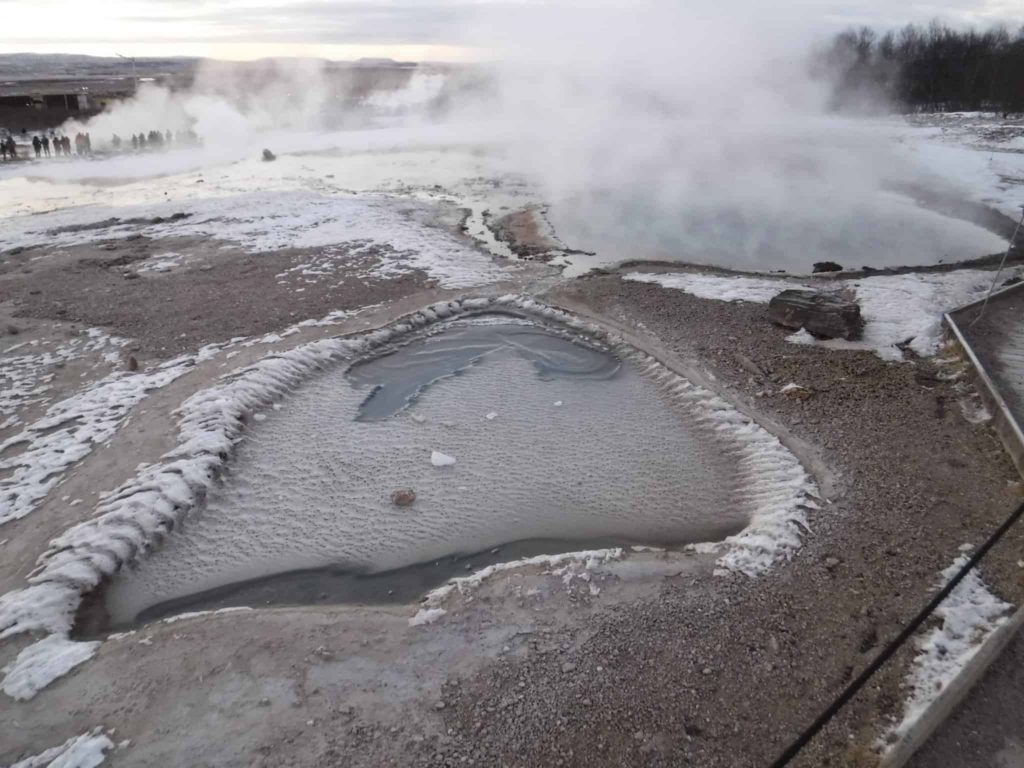
Stop 5) Gullfoss Waterfall
Located in the canyon of the Hvítá, Gullfoss is considered one of Iceland’s most beautiful waterfalls. It is most powerful in Summer when water cascades over the 2 drops, falling a total of 32 metres (105 ft), but in Winter it is most impressive as the river and falls turn into ice. In English Gullfoss means Golden Waterfall, which is a testament to the rainbows that dance in the waterfall’s splash and golden glow that lights up the snow-scape at sunrise and sunset.
While you’re here, take some time to learn about Sigríður Tómasdóttir. Widely regarded as Iceland’s first environmentalist, this incredible woman was an Icelandic activist whose campaigning helped preserve Gullfoss waterfalls, protecting it from industrialisation. There are informational boards all along the trail, which leads to two lookout points with impressive views of the falls.

Stop 6) Langjökull Glacier
If you continue north from Gullfoss, you’ll reach the Langjökull Glacier. The second largest ice cap in Iceland, Langjökull is a popular day trip destination for adrenaline junkies, who can enjoy snowmobiling on the glacier. This activity actually runs from Gullfoss, so you can park in the car park and meet your pick-up there, saving you the drive. Or include snowmobiling in your day trip of the Golden Circle. Alternatively, you can take a guided tour and walk inside the glacier, taking time to explore some of its many ice caves.
If you don’t have a car, you can join a day tour to the Langjökull Glacier from Reykjavík!
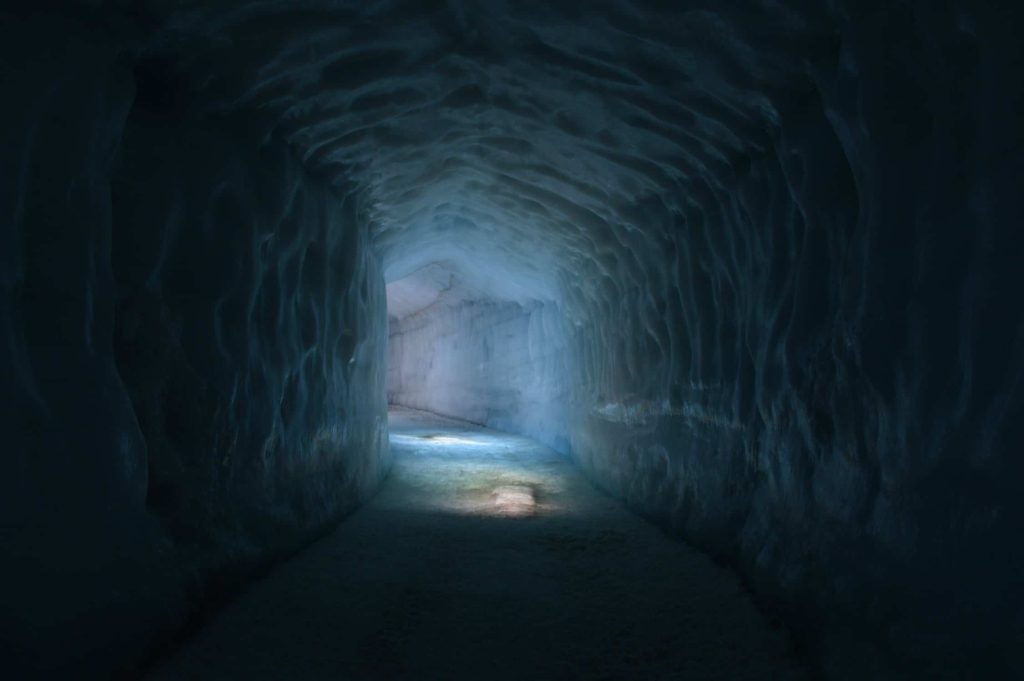
Stop 7) Gamla Laughin Secret Lagoon
After Gullfoss, you reach the southern part of the Golden Circle route and you have two road options: Road 30 and Road 35. Let’s look at detours from the Golden Circle Route as you follow Road 30.
One of the highlights of this road is Gamla Laughin Secret Lagoon, the oldest swimming pool in Iceland. This geothermal pool was made in 1891 and features water which trickles down from hot springs and geysers into warm pools.

Stop 8) Flúðasveppir Farmers Bistro
Nearby the Secret Lagoon, you’ll find Flúðasveppir Farmers Bistro. The only mushroom farm in Iceland, this is a great spot for lunch as it’s open between 12:00-17:00. With a menu featuring homegrown produce and, of course, a focus on mushroom dishes, this cosy bistro is not to be missed on a drive down Road 30.

Stop 9) Þjórsárdalur Valley
While you’re in the area, you should consider detouring east from Road 30 and exploring the Þjórsárdalur (Thjorsardalur) Valley. Known as the Southern Highlands of Iceland, Thjorsardalur Valley is home to 5 notable waterfalls:
- Hjalparfoss – One of the tallest waterfalls in the country, falling a total of 122 metres (400 ft).
- Haifoss & Granni – A pair of waterfalls that merge as they cascade into a rocky pool.
- Glanni – Situated near an ancient lava field, this fall has a convenient viewing platform about 200m from the car park.
- Þjófafoss – Also seen as Thjofafoss, this waterfall is part of the longest river of the Iceland, Þjórsá.
The best way to explore this rugged part of Iceland without a car is to join a day tour from Reykjavík, which also includes the Landmannalaugar natural geothermal hot springs, as well as the main sights in the Thjorsardalur Valley.
Here you’ll also find the famous Hekla Volcano. Also written as Hecla, Hekla Volcano is a 1491 metre (4891ft) tall stratovolcano and is one of Iceland’s most active volcanoes. Over 20 eruptions have occurred in and around Hekla since 874 AD and, during the Middle Ages, the Icelandic Norse called the volcano the Gateway to Hell.

Stop 10) Faxafoss Waterfall
Now let’s look at the attractions on Road 35. The first stop you’ll want to add to your Golden Circle Itinerary is Faxafoss Waterfall. Also called Faxi Waterfall, this huge cascade has been described as a small version of Gullfoss. At 80 meters (262ft) wide and 7 meters (22ft) high, Faxafoss is very impressive, and it’s literally right on the Golden Circle Route.

Stop 11) Friðheimar Farm
Less than 10 minutes down the road from Faxafoss sits Friðheimar Farm. A visitor-friendly tomato farm, renowned for its fresh produce and tomato soup, this is the best place to stop for lunch on the Golden Circle. Using geothermal energy to power their eco-friendly greenhouses, Friðheimar Farm offers a range of tomato-based products, as well as seasonal dishes and tasty souvenirs. Friðheimar Farm also has stables and you can meet Icelandic Horses on a visit to their farm. Check out our wildlife section later in this article for more information.
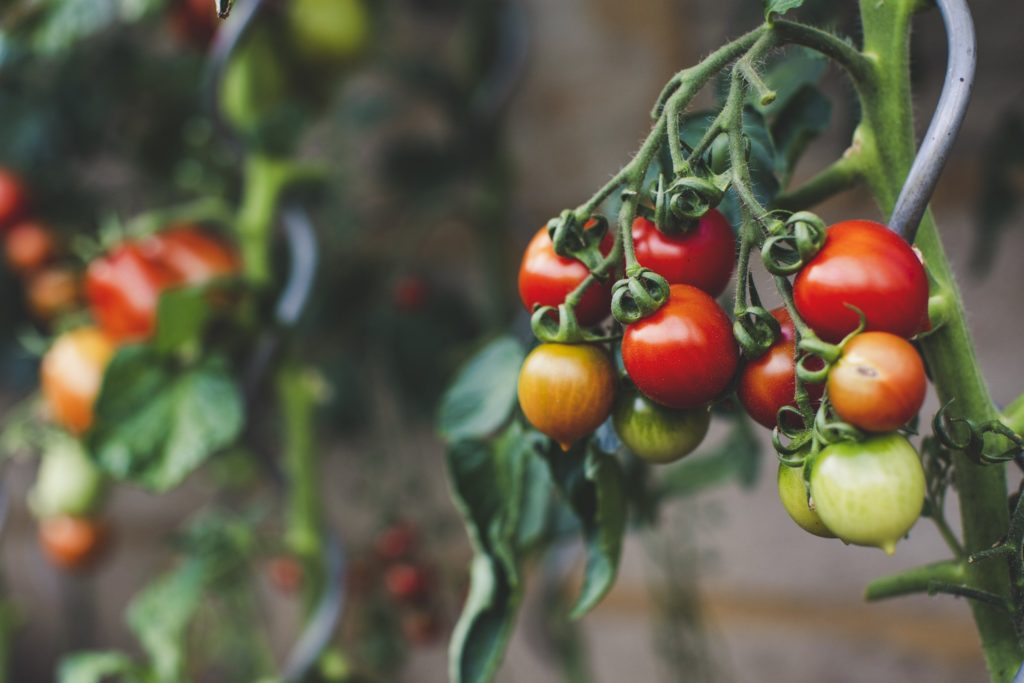
Stop 12) Sólheimar Ecovillage
The next stop on your Golden Circle trip is Sólheimar Ecovillage. Literally translating to Home of the Sun, this small village is renowned for its ecological, artistic and international community ethics. Only a short detour from Road 35, the hamlet is home to only around 100 people and makes for an interesting and educational rest stop.
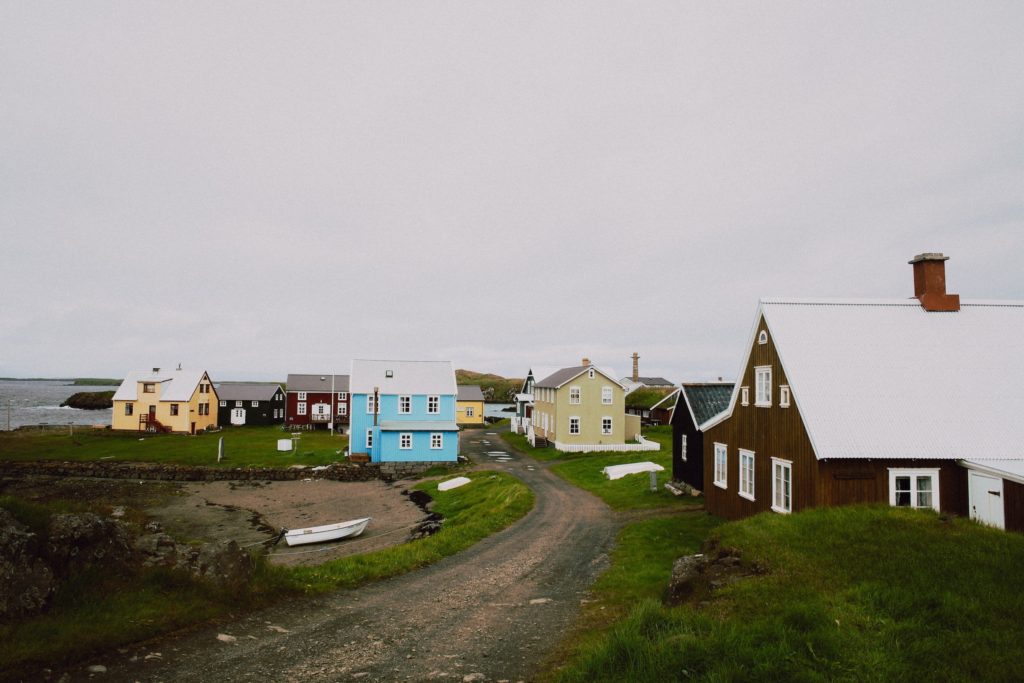
Stop 13) Kerið Crater
Surrounded by fiery red and orange rocks, Kerið (Kerid) Crater forms a complete oval with a small lake at the bottom and makes for an impressive final stop on the Golden Circle. This volcanic crater located in the Grímsnes area in Southern Iceland is famous for the bright blue colour of the water within the caldera, which is approximately 6,500 years old. The vibrant blue colour of the lake within comes from the minerals in the water, while the surrounding soil is composed of a rusty red (rather than black) volcanic rock. Landowners charge a small entrance fee of 400ISK (£2.50/$) to see the crater, but you can see it for no extra cost as part of a Golden Circle Tour.
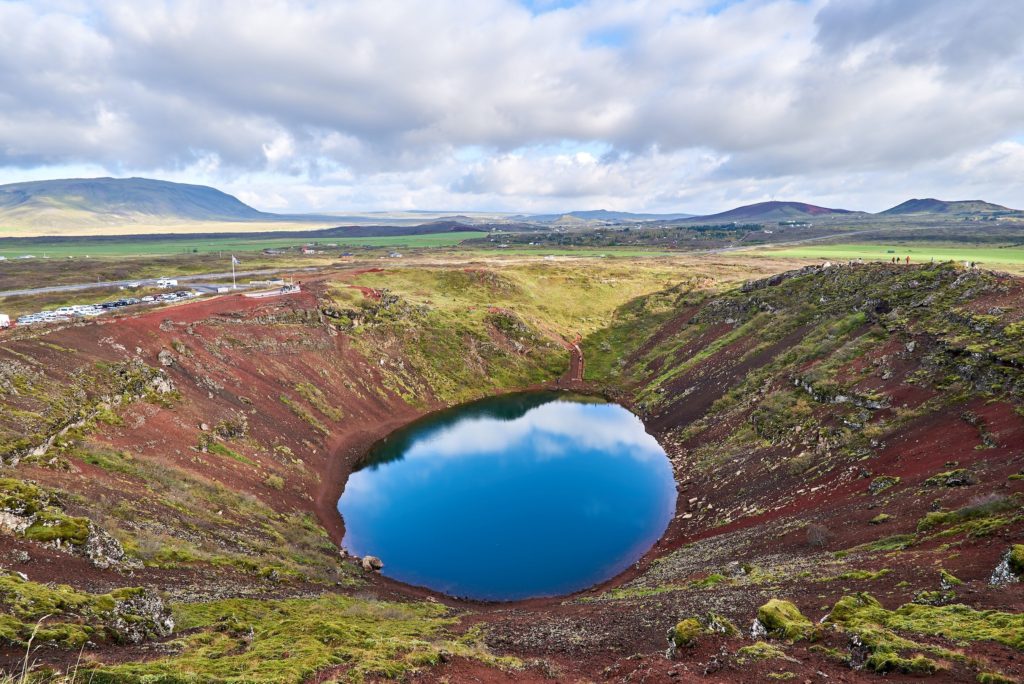
Stop 14) Ljósafoss Power Station
Bonus! You may have seen the Blue Lagoon Power Plant on a visit to one of Iceland’s most famous attractions, and you might have heard that Iceland runs on 85% renewable energy, but none of that would be possible without Iceland’s huge amount of geothermal activity. Lying almost exactly in the middle of the Golden Circle, Ljósafoss Power Station is a fascinating and educational stop. Halfway between Thingvellir National Park and the southern town of Selfoss, the power station can be found on Road 36 and brings the principles of electricity, hydropower, and geothermal and renewable energy to life in an informative exhibition.
Iceland’s Golden Circle Interactive Map
Use the filters on the tab on the left-hand side of the map to see attractions, accommodations, restaurants and more.
Is the Blue Lagoon part of the Golden Circle?
No, Iceland’s Blue Lagoon is not part of the traditional Golden Circle route however it can be added on as part of a tour. A popular day trip from Reykjavík, the man-made geothermal spa contains 9 million litres of seawater and the water is an iconic milky blue shade as a result of the way silica reflects sunlight. The water’s temperature is a constant 38°C (100°F) and is rich in salts and algae. You can easily split your Golden Circle journey into two or three days and add the Blue Lagoon as your first or final stop. You can book your Blue Lagoon Entry Ticket with Drink, Towel, and Mud Mask here. If you’re looking for a tour, we’d suggest this Golden Circle, Kerid Crater and Blue Lagoon Tour.
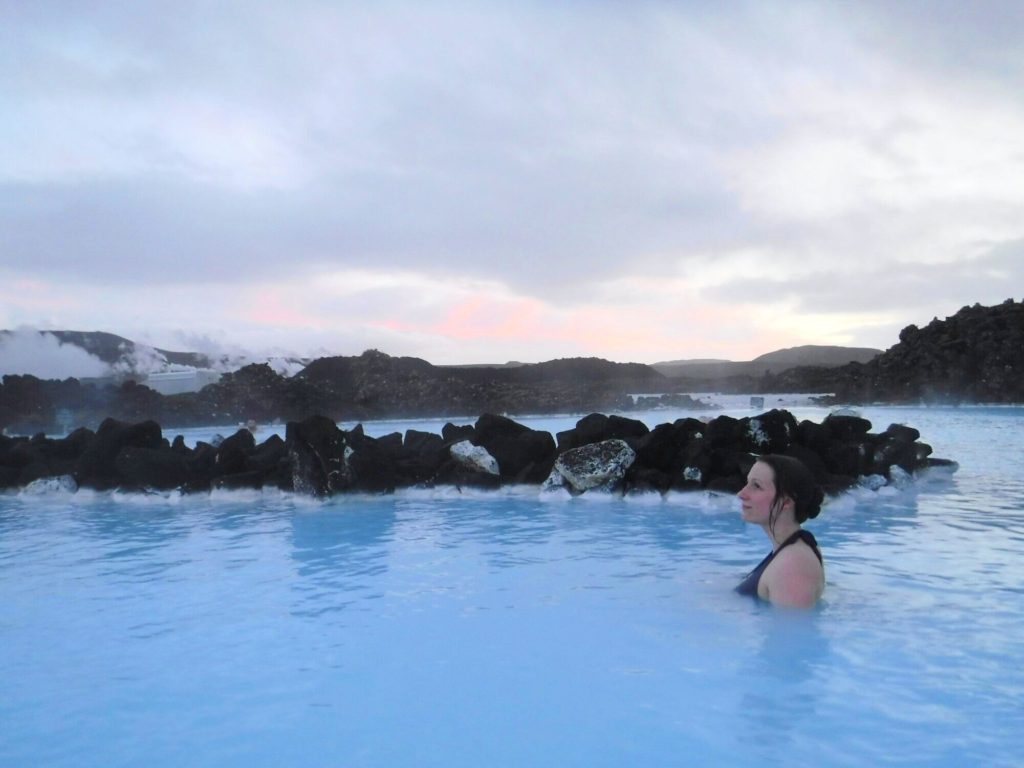
Food and drink
Geysir Glíma Restaurant – Serves Scandinavian cuisine, such as fish soup, cod and braised lamb.
Friðheimar Farm – A visitor-friendly tomato farm, renowned for its fresh produce and tomato soup.
Flúðasveppir Farmers Bistro – The only mushroom farm in Iceland with a menu featuring homegrown produce.
Skjól Bar – Located at Skjól Campsite and offers pizza, burgers and snacks.
Gullfoss Café – Features soups, sandwiches, salads and cakes.
Héraðsskólinn – A restaurant set within a boutique hostel, serving everything from trout to reindeer.
Fish & Chips in Flúðir – A permanent fish and chips truck outside Secret Lagoon.
You can find all of these food and drink recommendations (the green pins) on the interactive map above.
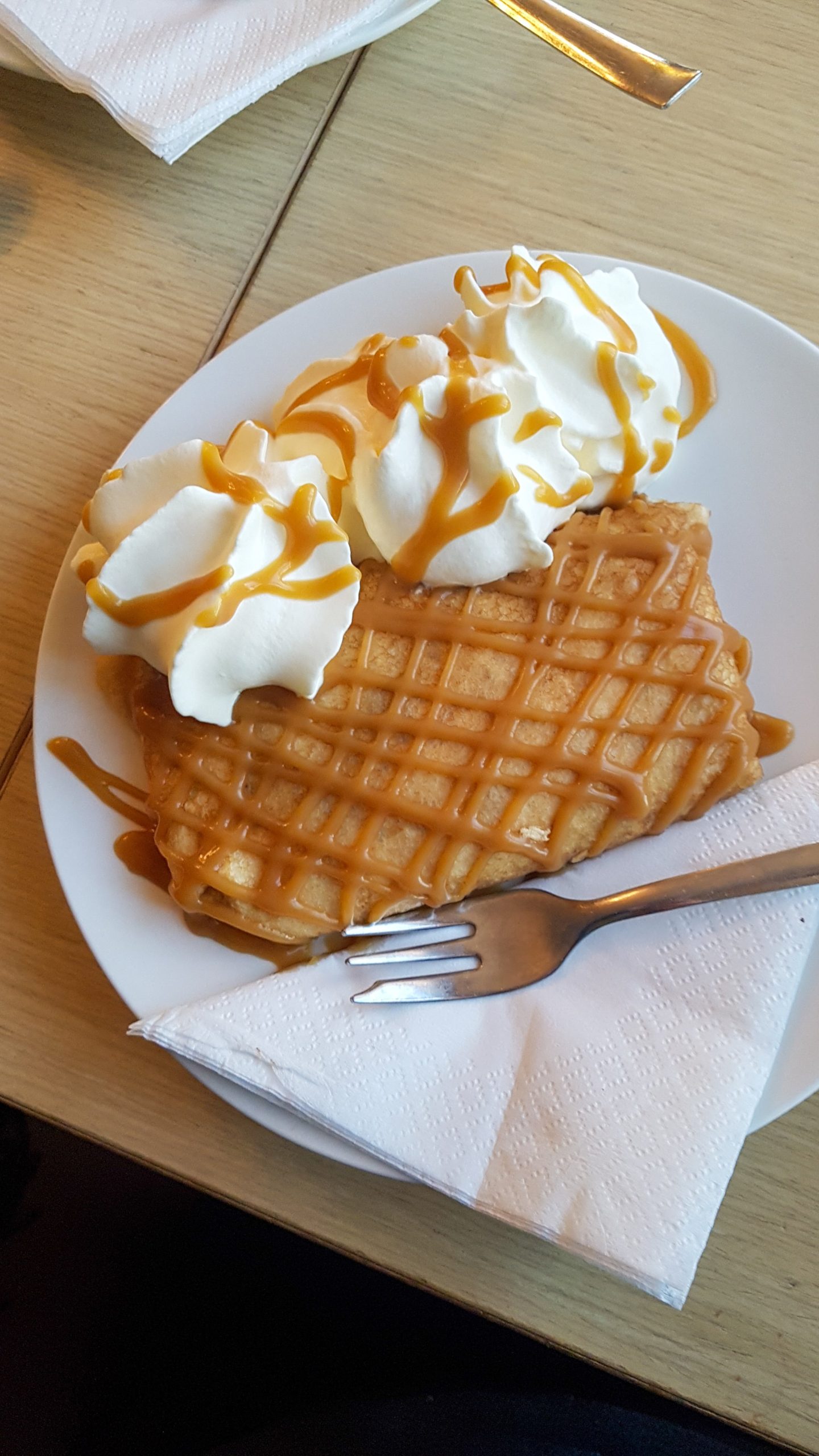
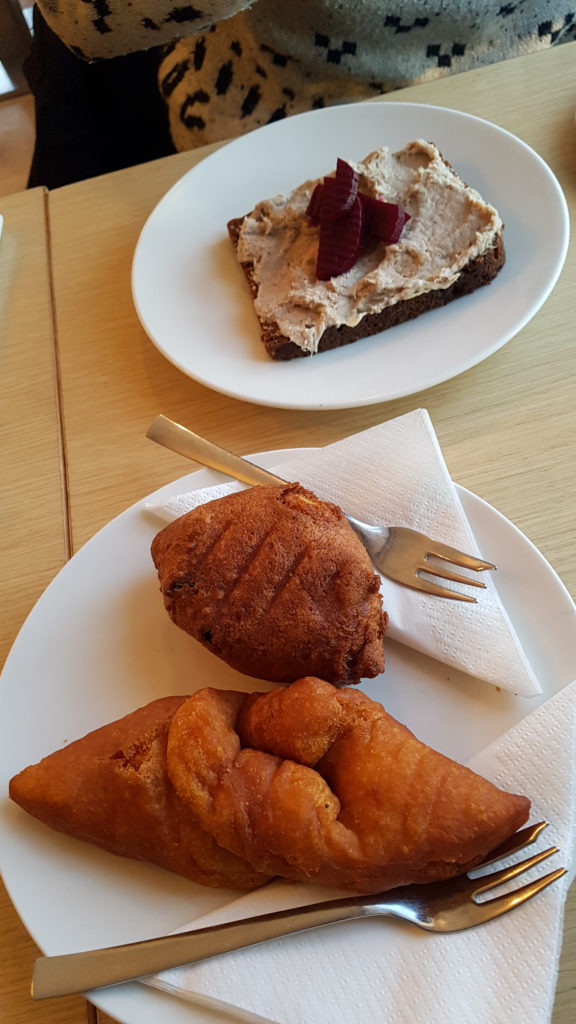
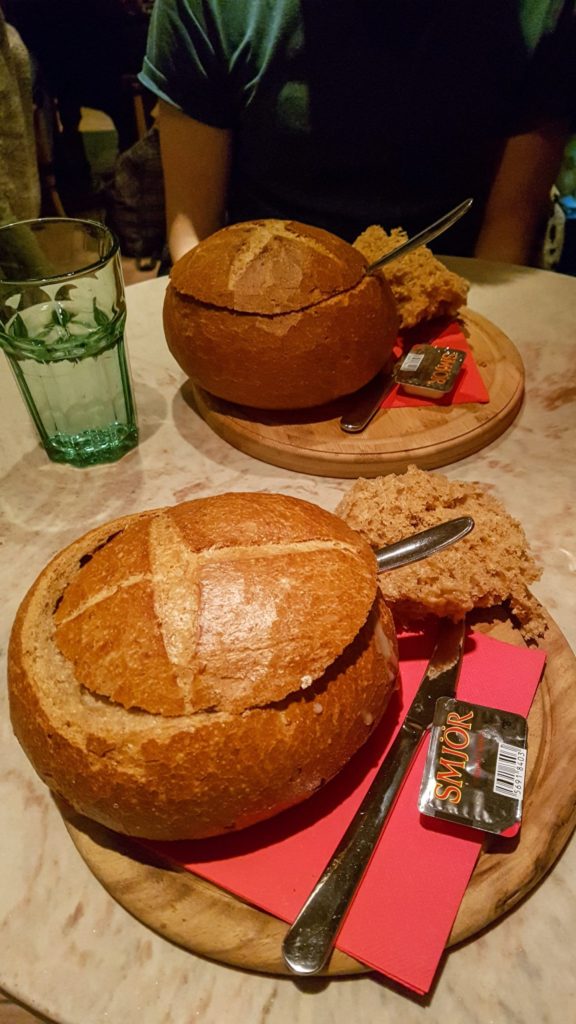
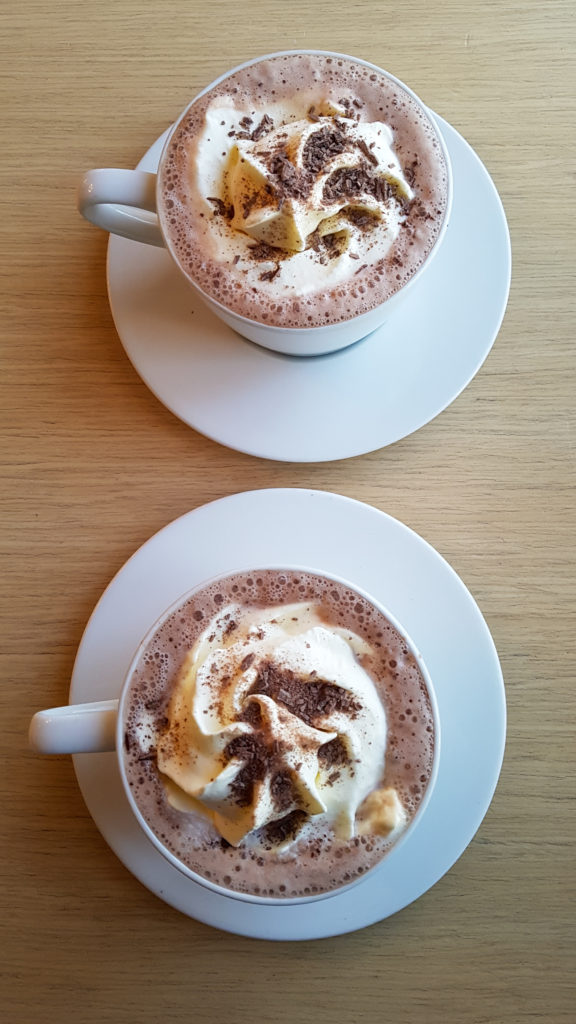
Wildlife along Iceland’s Golden Circle
Icelandic Horses are a unique breed of horse that many hope to see on a visit to Iceland. Although they may be pony-sized, they’re actually horses and are small, hardy and famous for their furry coats. They can be seen roaming Iceland’s vast landscapes and one of the best places to see Icelandic horses is on Iceland’s Golden Circle. You’ll likely spot them grazing in fields as you drive along the Golden Circle route and you can pull over (safely) to get a few photos.
Friðheimar Farm has a stables where you can meet Icelandic Horses. You’ll learn about the history and nature of this unique breed of horse and witness their five gaits – walk, trot, gallop, tölt, and flying pass – in a demonstration. Alternatively, you can combine a Stable Visit with a Greenhouse Lecture and learn how it is possible to grow tomatoes in Iceland too.
Bird watchers will be pleased to know that the harlequin duck, Barrow’s goldeneye, red-breasted merganser, Arctic tern and gyrfalcon can all be spotted around the Golden Circle. The best place to spot puffins – one of Iceland’s most famous birds – is on a boat trip to the islands of Akurey and Lundey. You can join an eco-certified boat tour from Reykjavík where you’ll be taken to Puffin Island for a chance to spot this iconic seabird.
From Reykjavík, you can also join a Wildlife Tour in a speedy RIB, where you have the opportunity to spot whales, dolphins and porpoises too, as well as having the opportunity to take in the main sights of Iceland’s capital from the water.
Find out more about where to see Wildlife in Iceland in our Thorough Guide to Iceland
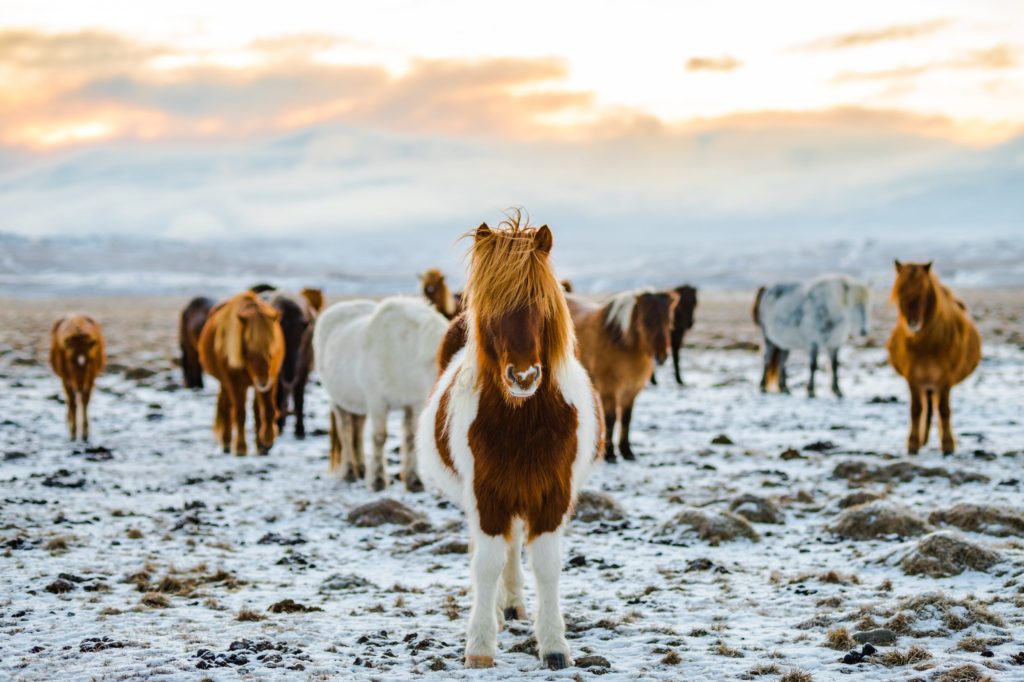
Golden Circle Accommodation
There is a large variety of hotels, hostels, guesthouses and B&Bs to choose from in Iceland. Spending a night on the Golden Circle can give you more time to explore some of Iceland’s best natural attractions, as well as putting you in prime position to beat the crowds. You can search for Golden Circle Hotels here and we’ve listed a few of our favourite cool and quirky accommodations near Iceland’s Golden Circle:
Quirky: ION Adventure Hotel – A sci-fi boutique design hotel, 11 miles (17km) from UNESCO-listed Thingvellir National Park and perfect for spotting the Northern Lights.
Artistic: Gallery Laugarvatn – A B&B which features a wide display of Icelandic handicrafts and offers bed and breakfast.
Cosy: Hotel Geysir – Only 90 metres (100 yards) from the Geothermal Hot Springs Area, Hotel Geysir offers free private parking, a bar, garden, barbecue and comfy beds.
Romantic: Ásahraun Shephard Hut – Compact but cosy tiny lodge, perfect for a couple looking to relax, with a fully equipped kitchen, dining area, TV and a private bathroom with hot tub and bathrobes.
Relaxing: 360 Hotel & Thermal Baths – 4-star hotel situated in the Icelandic countryside, featuring beautiful suites with panoramic views.
Traditional: Farmhotel Efstidalur – A farm stay situated 15 minutes drive from Gullfoss Waterfall, offering horse riding during the summer season and a geothermal outdoor hot tub to heat up in winter.
Unique: Reykjavík Domes – Domed tents with garden or mountain views and a garden, a terrace, Wi-Fi and a shared kitchen.

Camping around the Golden Circle
Those travelling Iceland on a budget should consider camping. Camping in Iceland is an excellent way to immerse yourself in nature and truly experience the Nordic countryside. Wild camping is illegal, so you need to be prepared and only stay in designated campsites. NorCamp is a great resource for finding campsites and they have an app too. Bear in mind that a lot of campsites close in winter, so you’ll want to plan a visit in summer if you’re interested in camping.
The 5 best Golden Circle campsites are:
Facilities: Showers (500 ISK), toilets, electricity (1000 ISK), washing machines, WIFI, a golf course, and a playground.
Price: 2000 ISK/night per adult.
Availability: May-September.
Facilities: A restaurant, showers, toilets, WIFI, washing machines (400 ISK), electricity (1000 ISK/day), a restaurant, a golf course, walking paths, and wheelchair accessibility.
Price: 1500 ISK/night per adult.
Availability: All year round.
Facilities: Cooking equipment, electricity (1200 ISK), toilets, showers, a swimming pool, a restaurant, and walking paths.
Price: 1200 ISK/night per adult.
Availability: May-September.
Facilities: Cooking equipment, toilets, showers, electricity (1000 ISK/night), a golf course, playground, and a swimming pool.
Price: 1800 ISK/night per adult.
Availability: All year.
Facilities: Showers, toilets, electricity (1000 ISK), hot and cold water, walking paths, fishing, a golf course and horse rental.
Price: 2000 ISK/night per adult.
Availability: May-September.
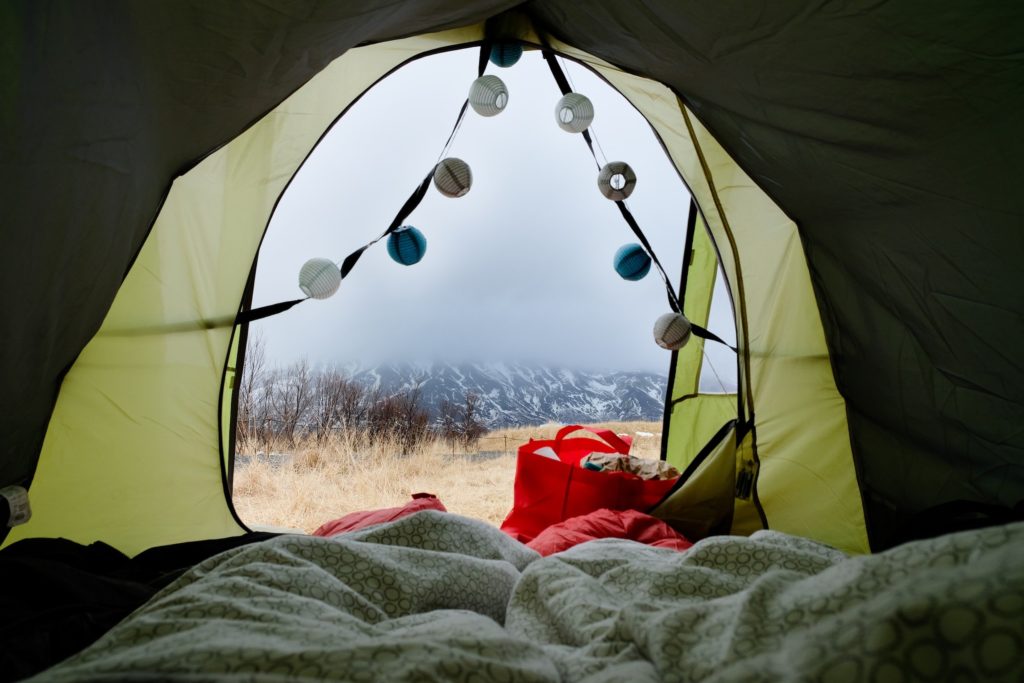
What to know before you go
In the winter, Iceland’s roads are icy. Weather changes quickly, and a sunny morning can easily turn into a snowstorm later that day. Iceland has a fantastic website to check real-time road conditions: Vegagerdin. You can find a full list of useful apps and websites for travelling Iceland here.
If you’re planning to drive Iceland’s Golden Circle, you can find detailed directions, plus lots of information about hiring a car and driving in Iceland, in our Ultimate Self-drive Golden Circle Road Trip Itinerary.
Read next:
The Thorough Guide to Reykjavík
A Spontaneous Winter Getaway to Iceland with TUI
The Thorough Guide to South East France
The Thorough Guide to Pembrokeshire
Check us out on social media!
